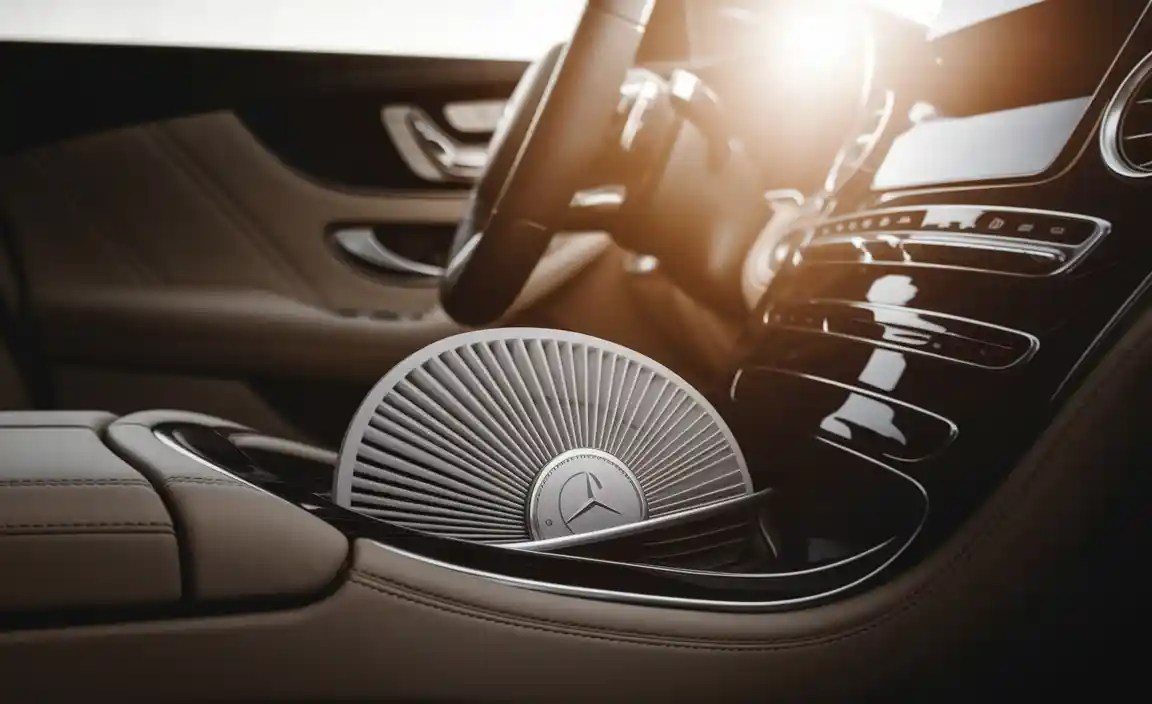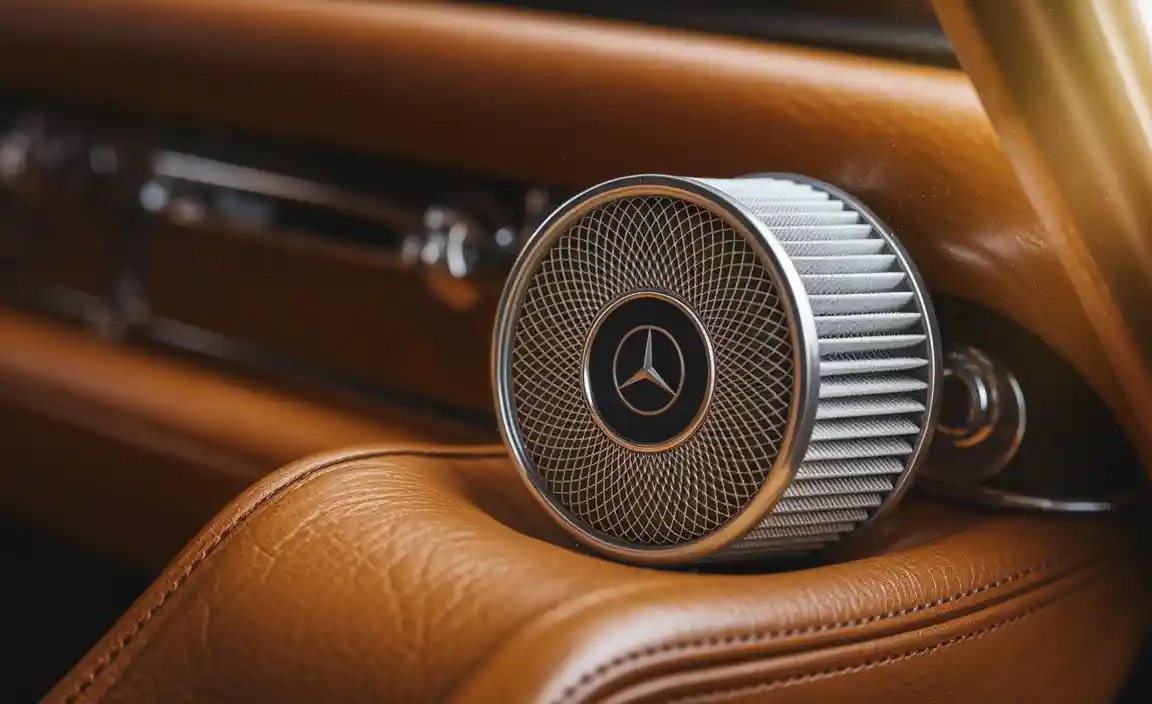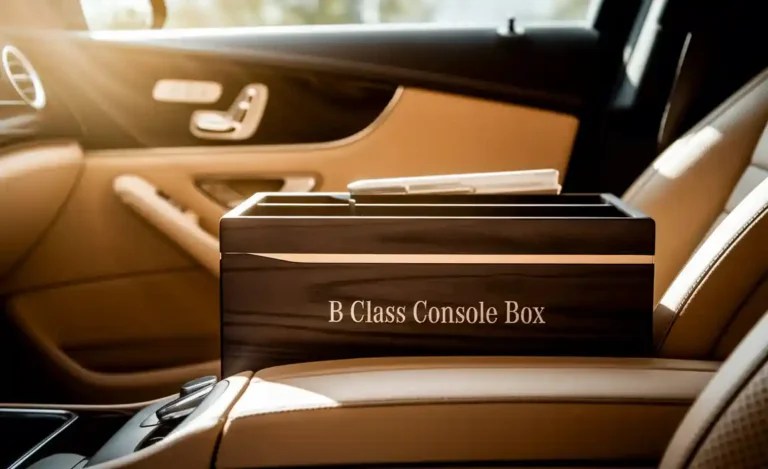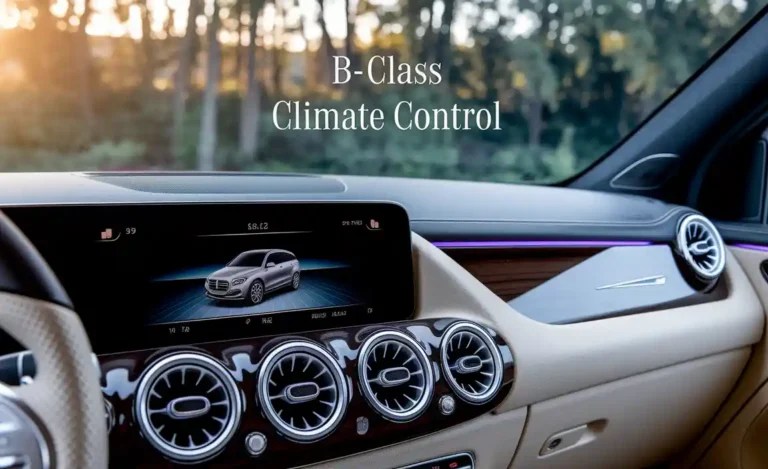B Class Cabin Filter: Ultimate Perfect Air
The B Class cabin filter is essential for ensuring pristine air quality inside your Mercedes-Benz. Replacing it regularly, typically every 10,000-15,000 miles or annually, removes allergens, dust, and pollutants, safeguarding your health and your car’s HVAC system.

Breathing fresh, clean air inside your Mercedes-Benz B Class is more than just a luxury; it’s a vital part of a healthy and enjoyable driving experience. Over time, the cabin air filter works tirelessly to trap airborne contaminants like dust, pollen, soot, and even microscopic pollutants. However, like any filter, it has a finite lifespan. A clogged or old filter can significantly reduce your vehicle’s air quality, leading to unpleasant odors, reduced airflow, and potential health issues such as allergies or respiratory irritation. Don’t worry if you haven’t replaced yours in a while, or if you’re unsure about its condition. This guide will walk you through everything you need to know about your B Class cabin air filter, making it simple to understand its importance and how to keep the air you breathe in your Mercedes-Benz as pure as possible.
Understanding Your Mercedes-Benz B Class Cabin Air Filter
Your Mercedes-Benz journey is about sophisticated engineering and unparalleled comfort, and that extends to the air you breathe. The cabin air filter plays a crucial, often unsung, role in this. It’s a component designed to purify the air entering the passenger cabin from the vehicle’s heating, ventilation, and air conditioning (HVAC) system. Think of it as the lungs of your car’s interior environment. Without it, every particle drawn in from the outside world – from traffic exhaust and industrial emissions to grass pollen and road dust – would directly enter your car.

Different filters offer varying levels of protection. Standard filters typically capture larger particles, while more advanced options, like activated carbon filters, can also neutralize odors and absorb harmful gases. The specific type installed in your B Class will depend on your model year and original specifications, but the fundamental purpose remains the same: to create a cleaner, healthier, and more pleasant environment for you and your passengers.
Why is a Clean Cabin Filter So Important?
A well-functioning cabin air filter is critical for several reasons, impacting not just comfort but also your health and the longevity of your vehicle’s HVAC system:
- Health and Well-being: The most significant benefit is improved air quality. By trapping allergens like pollen, dust mites, and mold spores, a clean filter can significantly reduce the risk of allergic reactions and respiratory problems for occupants, especially those with asthma or sensitivities.
- Odor Elimination: Many modern cabin filters, particularly those with activated carbon layers, are excellent at absorbing odors from traffic fumes, exhaust, and other environmental sources. This keeps your car smelling fresh.
- HVAC System Performance: A clogged filter restricts airflow. This forces your HVAC system to work harder, leading to reduced heating and cooling efficiency. It can also cause the system to wear out prematurely, leading to costly repairs.
- Defogging and Demisting: Proper airflow from a clean filter is essential for the defogger and demister functions to work effectively. A restricted airflow can impede your ability to clear condensation from your windows, especially in challenging weather conditions.
- Engine Protection (Indirectly): While the cabin filter protects occupants, a compromised seal around a dirty filter could theoretically allow some unfiltered air to bypass, though this is less of a direct engine concern and more about interior air quality.
Signs Your B Class Cabin Filter Needs Replacement
Your Mercedes-Benz B Class is engineered for subtle cues, and a failing cabin filter is no exception. Paying attention to your car’s interior environment can alert you to a filter in need of attention:

- Reduced Airflow: If the air coming from your vents feels weak, even when the fan is on high, the filter is likely congested.
- Unpleasant Odors: Musty, damp, or foul smells wafting from the vents are a strong indicator of a dirty filter, possibly with mold or mildew growth.
- Increased Allergy Symptoms: If you or your passengers experience more sneezing, coughing, itchy eyes, or difficulty breathing inside the car than outside, the filter may not be doing its job.
- Dust Accumulation: A noticeable increase in dust on your dashboard and interior surfaces, even after cleaning, can suggest unfiltered air is entering the cabin.
- Unusual Noises: While less common, a severely clogged filter might cause the HVAC fan to strain, producing an unusual sound.
B Class Cabin Filter Specifications and Types
Mercedes-Benz vehicles are known for their meticulous engineering, and the cabin air filter is no exception. Your B Class likely comes equipped with a filter designed to meet specific performance standards. Understanding these can help you choose the best replacement.
Mercedes-Benz typically uses two primary types of cabin air filters for the B Class, with variations often including activated carbon for enhanced odor and gas filtration. Always refer to your owner’s manual or consult with a Mercedes-Benz specialist for the exact part number and specifications for your specific model year and trim. Using the correct filter ensures optimal fit and filtration performance.

Standard vs. Activated Carbon Filters
When it comes time to replace your filter, you’ll likely encounter two main options:
- Standard Cabin Air Filters: These are typically made of pleated paper or synthetic fibers. They are effective at capturing larger particles like dust, pollen, and leaves. They are generally the most cost-effective option.
- Activated Carbon (or Activated Charcoal) Filters: These filters include an extra layer of activated carbon. This porous material is highly effective at adsorbing gases and neutralizing odors, including emissions, exhaust fumes, and general mustiness. They offer superior air purification but are usually more expensive than standard filters. For many B Class owners, especially those driving in urban areas or with sensitivities, an activated carbon filter is a worthwhile upgrade.
Finding the Right Part Number
Ensuring you purchase the correct cabin air filter is paramount. An incorrect filter might not seal properly, allowing unfiltered air to bypass it, or it could be physically too large or small for the housing.
The most reliable ways to determine the right part number for your B Class are:
- Consult Your Owner’s Manual: This is the definitive guide provided by Mercedes-Benz.
- Check Your Current Filter: If accessible, the part number is often printed directly on the old filter’s frame.
- Online Parts Catalogs: Reputable Mercedes-Benz parts retailers and forums often have searchable databases where you can enter your VIN or model details.
- Contact a Dealership or Specialist: They can look up the exact part based on your vehicle’s VIN.
For example, a common part number for certain B Class models might be in the AXXXXXXX XXXXXXX range, but this can vary significantly. It’s always best to verify.
Where is the B Class Cabin Air Filter Located?
The location of the cabin air filter in a Mercedes-Benz B Class is designed for accessibility, although it can vary slightly based on the specific generation (e.g., W245, W246, W247). However, the most common location for many B Class models is behind the glove compartment.
Accessing it typically involves removing the glove box. While this might sound daunting, it’s a straightforward process that many DIY enthusiasts can manage. Once you know where to look and what to expect, the task becomes much simpler.
Common Location: Behind the Glove Box
For most Mercedes-Benz B Class models, the cabin air filter housing is situated in the dashboard, accessible by removing or opening the glove compartment. Here’s a general idea of what to expect:
- Open the Glove Box: Fully open the glove compartment door.
- Remove Any Contents: Take out everything stored inside.
- Locate the Glove Box Stops/Dampers: Often, there are small plastic arms or clips on the sides that limit how far the glove box opens. Gently press or manipulate these to allow the glove box to swing down further, or in some cases, detach completely. Consult your owner’s manual or a specific B Class DIY video for your generation if unsure.
- Access the Filter Housing: Once the glove box is out of the way, you should see a plastic cover or housing. This is where the cabin air filter resides.
It’s crucial to note that specific steps might differ slightly between B Class generations (W245, W246, W247). Searching online for a video tutorial tailored to your specific B Class model year is highly recommended for visual guidance.
How to Replace Your B Class Cabin Air Filter: A Step-by-Step Guide
Replacing your cabin air filter is a satisfying DIY task that can save you money and ensure you’re breathing clean air. While specific model years might have minor variations, the general process is quite similar for the Mercedes-Benz B Class. Remember to always consult your owner’s manual or a visual guide for your specific model year.
Tools and Materials You’ll Need
Fortunately, this job requires minimal tools:
- New Cabin Air Filter: Ensure it’s the correct part number for your B Class.
- Gloves (Optional): To keep your hands clean.
- Flathead or Phillips Head Screwdriver (Possibly): Depending on how the filter housing is secured or if the glove box needs slight disassembly.
- Plastic Trim Removal Tools (Optional): Useful for gently prying without damaging interior panels, especially if the glove box detaches via clips.
- Trash Bag or Bin: To dispose of the old filter.
Step-by-Step Replacement Process
Let’s get this done:
- Prepare the Vehicle: Park your B Class on a level surface and turn off the engine. Ensure the HVAC system is also turned off.
- Access the Filter Housing: As detailed in the previous section, the first step is to gain access to the filter housing, which is typically behind the glove compartment. Open the glove box and carefully detach it or allow it to swing down as much as possible. This might involve releasing small clips or dampers.
- Remove the Old Filter: You’ll see the filter housing, usually a plastic frame. It might be held in place by clips or a retaining cover. Gently release these fasteners and slide or pull out the old cabin air filter. Note the direction of airflow indicated on the old filter. You’ll want the new filter installed with the same airflow direction.
- Clean the Housing (Optional): Before inserting the new filter, you can use a dry cloth or a vacuum cleaner with a brush attachment to remove any debris, leaves, or dust from the filter housing and surrounding area. This prevents the trash from being immediately drawn into the new filter.
- Install the New Filter: Carefully slide the new cabin air filter into the housing. Ensure it is oriented correctly, matching the airflow direction arrow (usually pointing downwards or towards the rear of the vehicle) of the old filter. Gently push it into place until it fits snugly.
- Reassemble the Glove Box: Once the new filter is securely in place, reattach the glove box. This usually involves reversing the detachment process. Ensure all clips and dampers are properly engaged.
- Test the System: Start your B Class and turn on the HVAC system. Set it to various fan speeds and modes (fresh air, recirculate, heat, cool) to confirm that airflow is strong and consistent, and that there are no unusual noises or odors.
Congratulations! You’ve successfully replaced your cabin air filter. Enjoy the noticeably fresher air.
B Class Cabin Filter Maintenance Schedule and Best Practices
Maintaining your B Class cabin air filter is a simple yet impactful aspect of car care. Adhering to a regular replacement schedule ensures that the system continues to operate at its peak performance, providing you with the cleanest possible air and preventing potential strain on your vehicle’s HVAC components.
Recommended Replacement Intervals
Mercedes-Benz generally recommends replacing the cabin air filter every 10,000 to 15,000 miles or at least once a year. However, this is a guideline, and several factors can necessitate more frequent replacement:
- Driving Environment: If you frequently drive in dusty, polluted, or high-pollen areas (e.g., rural roads, construction zones, heavy urban traffic, areas with seasonal allergies), your filter will clog faster.
- Climate Control Usage: Heavy use of the air conditioning or heating systems can also put more strain on the filter.
- Towing or Hauling: While less common for the B Class, if used for towing, this can increase the load on the HVAC system.
- Previous Filter Condition: If you notice any of the signs mentioned earlier (reduced airflow, odors, etc.) before the recommended interval, it’s wise to replace it sooner.
Considering these variables, if you live in a challenging environment, consider inspecting your filter every 6 months and replacing it every 12 months or sooner if symptoms appear. For those in milder climates with less demanding driving conditions, sticking to the 12-15,000-mile or annual recommendation is typically sufficient.
Tips for Maximizing Filter Life and Air Quality
- Use High-Quality Replacements: Opt for filters from reputable brands or genuine Mercedes-Benz parts. They are designed for optimal fit and filtration efficiency. Activated carbon versions offer superior odor and gas filtration.
- Regular Visual Inspection: Even if you’re not changing it, a quick visual check behind the glove box can reveal if the filter is excessively dirty or clogged.
- When to Consider an Upgrade: If you frequently experience allergens or odors, consider switching to an activated carbon filter for enhanced purification.
- Proper Installation is Key: Ensure the filter is seated correctly and the airflow direction arrow is observed. A poorly installed filter will not perform effectively and could allow bypass.
- Maintain Your HVAC System: Regularly run your A/C and heating systems, even in cooler months, to keep the seals lubricated and the system functional. This helps prevent mold and mildew growth within the HVAC ducts, which can contribute to bad smells even with a new filter. For deeper cleaning, professional HVAC system services are available.
- Ventilation is Beneficial: Periodically drive with windows down to air out the interior and reduce humidity, which can help minimize mold and mildew build-up.
- Consider an Air Purifier: For those with severe allergies or sensitivities, a small, portable HEPA air purifier designed for automotive use can offer an additional layer of protection.
Comparing B Class Cabin Filter Options
When it comes to selecting a replacement cabin air filter for your Mercedes-Benz B Class, you have a range of options, each with its own set of benefits and trade-offs. While genuine Mercedes-Benz parts offer guaranteed compatibility and quality, high-quality aftermarket filters can provide excellent performance at a more competitive price point. Understanding these differences can help you make an informed decision that suits your needs and budget.
Genuine Mercedes-Benz vs. Aftermarket Filters
Genuine Mercedes-Benz Filters:
- Pros: Guaranteed perfect fit, highest quality materials, engineered to meet Mercedes-Benz’s stringent standards, often feature advanced filtration layers.
- Cons: Typically the most expensive option.
Aftermarket Filters:
- Pros: More affordable, wide variety of brands and types (including activated carbon options), widely available.
- Cons: Quality can vary significantly between brands. It’s crucial to research reputable aftermarket manufacturers. Fitment might be slightly less precise on rare occasions, though good quality aftermarket filters are designed to meet OE specifications.
Reputable Aftermarket Brands:
When choosing an aftermarket filter, look for brands known for their automotive filtration products. Some well-regarded names include Mann-Filter, Bosch, Mahle, and Purolator. Always check product reviews and specifications to ensure they meet or exceed OEM standards.
Cost Considerations and Value
The cost of a B Class cabin air filter can range from approximately $20 for a basic aftermarket filter to $60-$100 or more for a premium activated carbon filter or a genuine Mercedes-Benz part. When considering “value,” it’s not just about the price tag but the performance and longevity you receive.
Typical Price Range:
| Filter Type | Approximate Price Range (USD) | Key Benefit |
|---|---|---|
| Standard Aftermarket | $20 – $40 | Cost-effective basic particle filtration. |
| Activated Carbon Aftermarket | $30 – $50 | Enhanced odor and gas absorption at a good price. |
| Genuine Mercedes-Benz (Standard) | $40 – $70 | Guaranteed fit and quality, reliable performance. |
| Genuine Mercedes-Benz (Activated Carbon) | $ |






